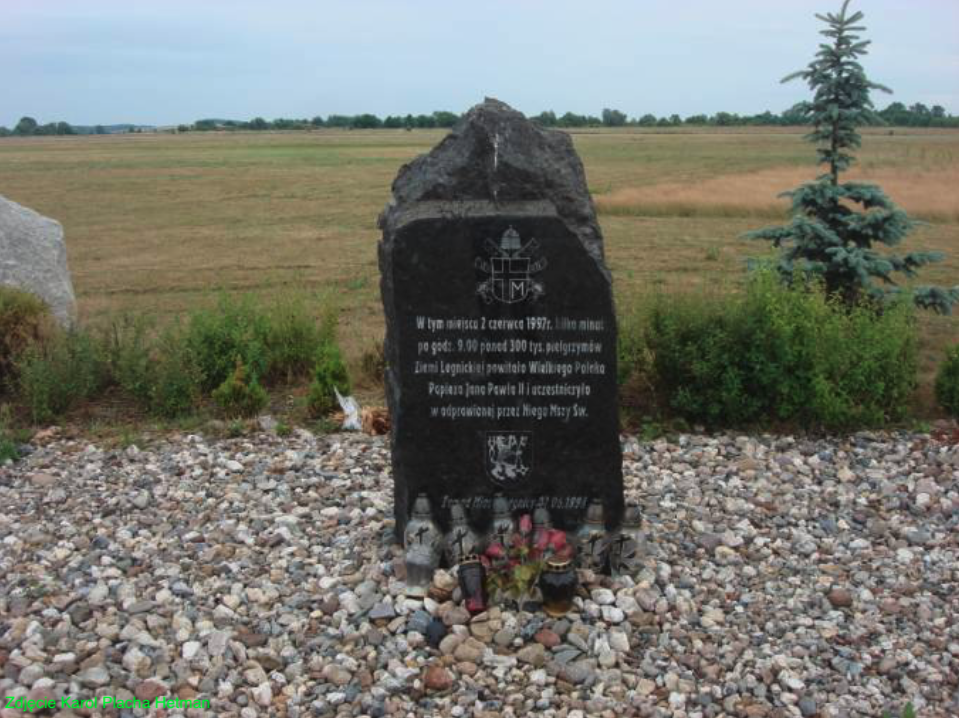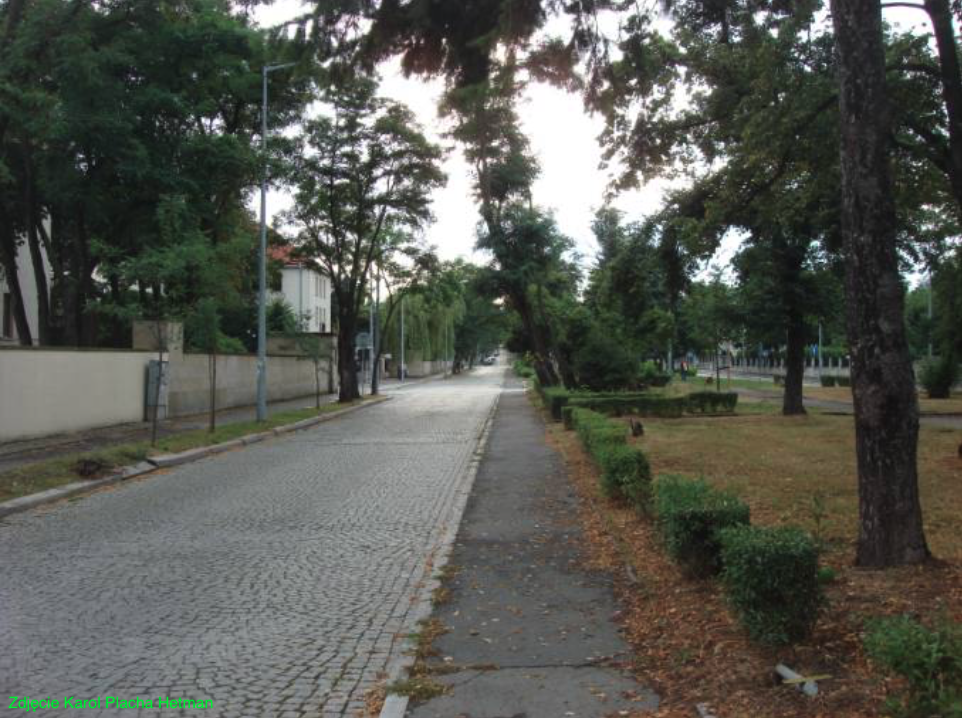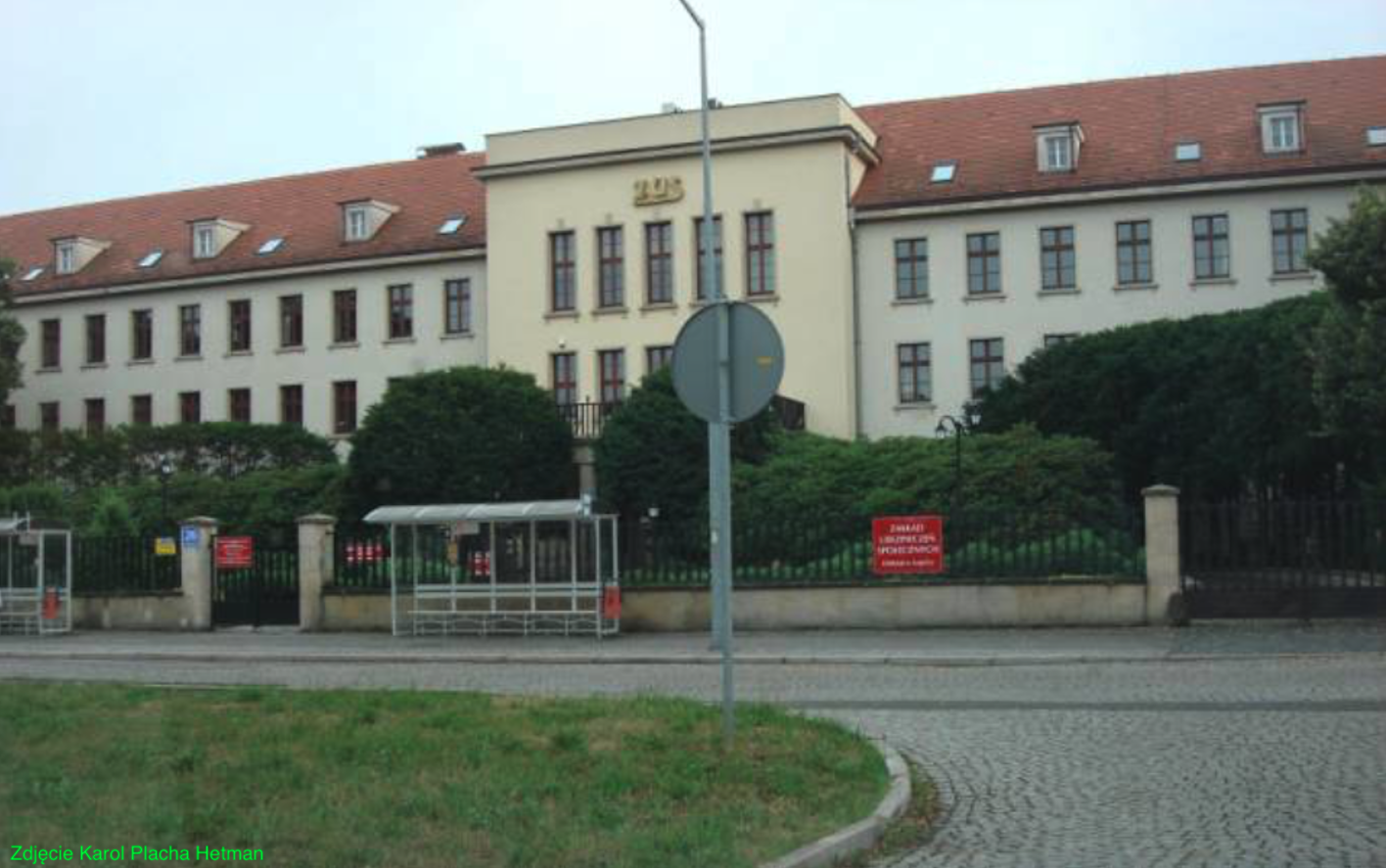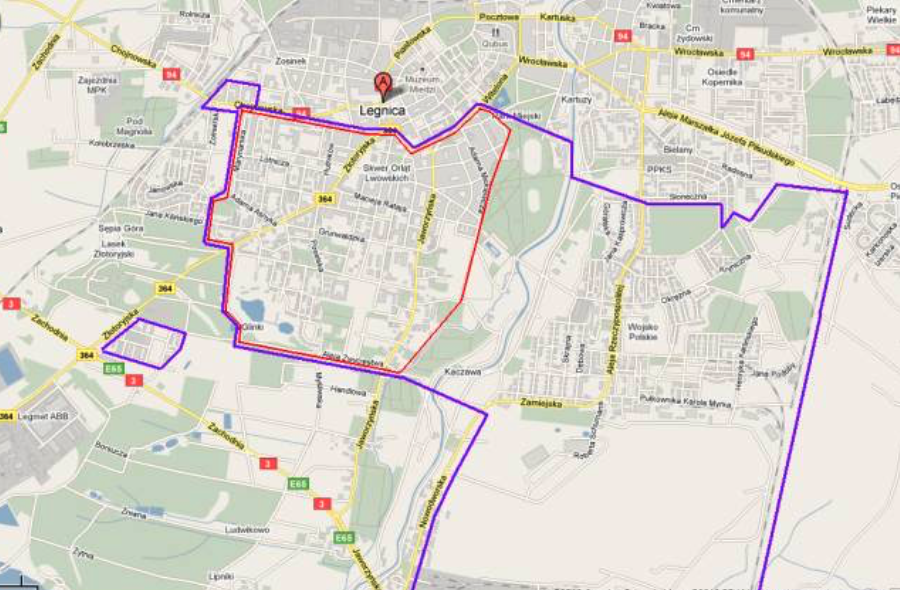Legnica 2009-01-08
Former Soviet airport in Legnica.
Geographic coordinates: 51.183N 16.182E. Elevation 121 m.
Legnica in the Free Republic of Poland.
The Muscovites left behind 3,000 apartments. Most of them were in need of major renovation. Including the replacement of roofs, all joinery and all installations. This is how 4 barracks blocks at Złotoryjska Street were renovated. But to this day (2009), many apartment blocks are still waiting for renovation or demolition. It will be many years before the city deals with soil contamination in the areas used by the Muscovites. Pumps are still extracting petroleum-derived substances from under the Legnica airport. In the 1990s, this oil was also recovered at home. Holes were dug and the emerging oil was collected with bottles. Diesel engines ran on this liquid!
It was said about Legnica that from the air it looked like a plate of dumplings, half of them Russian, half of them lazy. Pierogi are related to the unwritten ban on serving Russian dumplings. That’s why these dumplings were called pierogi Legnica, but these dumplings have a different filling.
Without a doubt, Legnica owes most to the figure in the white robe. The greatest of the Slavic families. Saint John Paul II. It was He who breathed spirit into this beautiful but empty City. Which the Muscovites carved in their own image, and were joined by Polish communists. This is appreciated by our contemporaries. In 1992, Pope John Paul II established the Diocese of Legnica. The first Diocesan Bishop was Bishop Tadeusz Rybak. Anticipating the chronology, he was succeeded on March 19, 2005 by Bishop Stefan Cichy, whose ingress took place on April 30, 2005. On March 25, 1993, the Major Seminary of the Diocese of Legnica was opened.
On June 2, 1997, Pope John Paul II himself came to Legnica, where he celebrated Holy Mass at the former Soviet airport.
In 1997, Poland was hit by a great flood. The inhabitants of Legnica remembered the flood that flooded the city in 1977, when Kaczawa burst its banks. Huge forces were mobilized and, thanks to their own sacrifice, the inhabitants defended the city. In 1997, the water level in Kaczawa was higher than in 1977. On July 20, 1997, however, water broke the embankments in two places, at the northern swimming pool and in the Stare Piekary housing estate. But the next day the situation was under control and no major tragedy occurred.
On January 1, 1999, another administrative change took place in Poland. Legnica lost its status as a Provincial City and became a County City and the capital of a land district in the Lower Silesian Voivodeship. On October 2, 2000, the District Court moved to the renovated building at ul. taken over by the Muscovites after they left Legnica. Złotoryjska.
In the period 1998-2001, the first Catholic church since 1913, dedicated to Tadeusz the Apostle, was built in Legnica. In 2002, the 10th anniversary of the existence of the Diocese of Legnica was solemnly celebrated.
The city of Legnica today. 2010 year.
Legnica, formerly called Lignica, is a district town. It is the seat of the town and land district. It is located in the Lower Silesian Voivodeship on the Kaczawa River. It is the third largest city in the Lower Silesian Voivodeship after Wrocław and Wałbrzych. It has 106,000 inhabitants. In terms of the number of inhabitants, it ranks 39th in the Republic of Poland. It covers an area of 56.29 square kilometers. From Legnica to; Wrocław is 60 km away, Warsaw is 354 km away.
Districts and housing estates; Bielany, Fabryczna, Kartuzy, Kwadrat, Ludwikowo, Osiedle Asnyka, Osiedle Kopernika, Osiedle Piekary, Osiedle Sienkiewicza, Pawice, Piekary Przedmieście, Głogowskie, Przybków, Stare Miasto, Tarninów, Zakaczawie. It must be remembered that Legnica is the warmest city in the Republic of Poland. Thanks to this, it is a city of beautiful greenery, the areas of which are very large. Society respects the beauty of nature. The most valuable monuments in Legnica include the Piast Castle, the Baroque Town Hall, the Neo-Renaissance Town Hall, and the Cathedral of Saints Peter and Paul. Today, there is a court in the former garrison headquarters, and a health care center and a district clinic in the clinic. One of the hotels turned into a tax inspection office, the other into a retirement home. In the 18th century Knight’s Academy, where the Muscovites had warehouses, it was located, among others; music school, library and catering facilities.
Currently (2009) Legnica is also a significant cultural and educational center. There are 8 universities in its area. There is local TV and radio. Local magazines are published. There are several sports clubs. There is a theater named after Helena Modrzejewska in Legnica.
Car transport. – There are over 40,000 private vehicles registered in Legnica. Several impressive road routes, national and provincial, run through the city; Motorway A 4 (Jędychowice – Korczowa), National Road No. 3 (Świnoujście – Jakuszyce), National Road No. 94 (Krzywa – Kraków), Provincial Road No. 364 (Legnica – Lwówek Śląski). The S 3 expressway (Świnoujście – Legnica – Lubawka) is planned.
Railway communication – There is one main passenger railway station in Legnica, PKP Legnica. It is located on the E-30 transit line; Kiev, Lviv, Przemyśl, Krakow, Katowice, Wrocław, Legnica, Zgorzelec, Berlin. The E-30 transit line has a railway bypass around Legnica, so freight trains do not have to pass through the city. There is also a Legnica Piekary railway stop on the route to Jawor. In addition to the main railway route, there are connections to Jawor, Rawicz, Lubin and Złotoryja. Passenger connections are not available in all directions.
Public transport. – let us just remind you that in the 20th century Legnica had tram transport, which was closed in 1968. Currently, the City operates the Municipal Transport Company, established on January 1, 1996, through the transformation of WPK Legnica (Wojewódzki). MPK is a company of the manufacturer of city buses "Solaris Bus & Coach" from Bolechowo near Poznań (6% of shares) and the Legnica Commune Treasury (94%). 79 MPK buses serve approximately 700 km of routes on 21 city lines (including 1 circular and 2 night lines) and 3 suburban lines. Bus connections with nearby towns are also provided by PKS "Trans-Pol" in Legnica, established in 2005 as a result of the transformation of the state-owned enterprise PKS. Legnica also has bus connections with Western Europe. As in other parts of the country, small suburban and intercity carriers also have an increasing share in local transport services from year to year.
Tarninów, Kwadrat.
Combining the names Tarninów and Kwadrat into one is an over-interpretation. But to understand Legnica, you need to know this area, because both names almost overlap. Legnica owes the creation of the Tarninów district to the mayor, Dr. Ottomar Oertel, who held his office for 40 years (1872–1912). Thanks to him, the city center also gained a new face, including the impressive, although unfinished City Hall. Thanks to the efforts of the Blackthorn Association, founded two years ago, mayor Oertel now has his own plaque in the city. Tarninów is a district whose origins date back to 1870 (other sources say 1891). At that time, the first villas of wealthy inhabitants of Legnica and the surrounding area began to be built here. Most residents had their own successful businesses. The development of Tarninów ended when the Germanic army started World War II. Ultimately, the Tarninów district occupied approximately 45 hectares. From Chojnowska Street, through Złotoryjska Street, through Jaworzyńska Street to the City Park.
After World War II, a new name appeared, Kwadrat. Where does the name Square come from? It was invented by the inhabitants of Legnica – from the wall with which the Soviets separated themselves in 1948. The square consists of 1,100 objects on approximately 40 hectares. He was visited by all CCCP party and state dignitaries who paid official and unofficial visits to Poland. After the invasion of Czechoslovakia by Warsaw Pact troops, the leader of Czech communists, Aleksander Dubcek, was detained here for several hours, arrested in Prague and then transported to Moscow.
In Tarninów, among trees and abundant greenery, there are eclectic and modernist villas. The most beautiful one is probably the linden alley, Władysława Grabskiego Street, where the impressive building of the former PGW headquarters, now the Social Insurance Institution, stands.
The most representative building in the Square was the command building, sometimes also called the Square, due to its actually square base and cubic shape. This is where subsequent PGW commanders had their offices. The equipment of the office was typical. Desk, armchairs, wardrobes, safes, globe and maps. It was here that generals in socks walked on maps spread on the floor and implemented the Kremlin’s plans to invade Europe.
The square was an area closed not only to Poles. Even Soviet rank and file were allowed to enter there only with special passes, for business or private matters. It was a city called Little Moscow, because every soldier dreamed of being here. Because, for example, an officer in Kazakhstan had only a tent at his disposal, and at his entrance there was a list of the equipment in the tent.
In the 1980s, officers from all over the University of Warsaw appeared on the streets, because the entire command center of the communist armed forces was here. When columns of military cars were passing through Legnica, all traffic was stopped. Maybe it’s a good thing, because thanks to this, fewer Poles died under the wheels of trucks driven by drivers under the influence of alcohol.
Anyone who thinks that the Muscovites only sat behind the wall is wrong. They were scattered all over the City. They scattered like lice. At the turn of the 1950s and 1960s, when Legnica had 70,000 inhabitants, and about 40,000 of them were unwanted guests. For nearly 50 years, the number of occupiers ranged from 30,000 to 60,000 people. And in relation to the total number of inhabitants it fluctuated between 40 – 60%.
Photo description: Red is a Square. The purple color represents the areas occupied by Muscovites.
Written by Karol Placha Hetman




